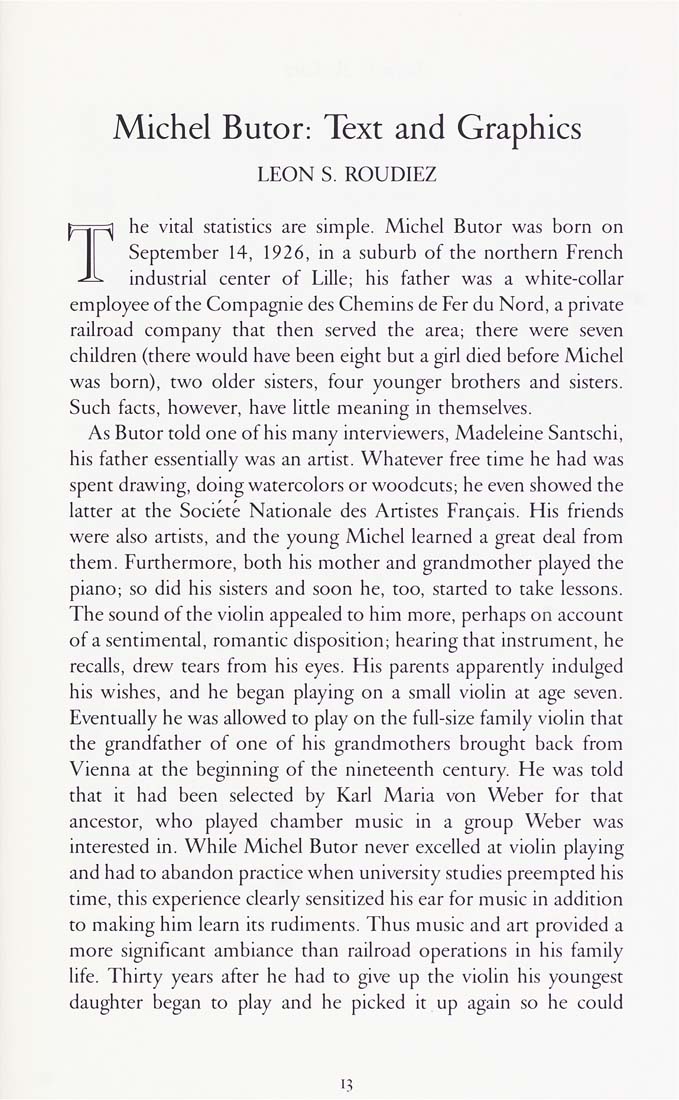Columbia Library columns (v.36(1986Nov-1987May))
(New York : Friends of the Columbia Libraries. )
|
||
|
|
|
|
| v.36,no.1(1986:Nov): Page 13 |

Michel Butor: Text and Graphics LEON S. ROUDIEZ The vital statistics are simple. Michel Butor was born on September 14, 1926, in a suburb of the northern French industrial center of Lille; his father was a white-collar employee of the Compagnie des Chemins de Fer du Nord, a private railroad company that then served the area; there were seven children (there would have been eight but a girl died before Michel was born), two older sisters, four younger brothers and sisters. Such facts, however, have little meaning in themselves. As Butor told one of his many interviewers, Madeleine Santschi, his father essentially was an artist. Whatever free time he had was spent drawing, doing watercolors or woodcuts; he even showed the latter at the Societe Nationale des Artistes Franjais. His friends were also artists, and the young Michel learned a great deal from them. Furthermore, both his mother and grandmother played the piano; so did his sisters and soon he, too, started to take lessons. The sound of the violin appealed to him more, perhaps on account of a sentimental, romantic disposition; hearing that instrument, he recalls, drew tears from his eyes. His parents apparently indulged his wishes, and he began playing on a small violin at age seven. Eventually he was allowed to play on the full-size family violin that the grandfather of one of his grandmothers brought back from Vienna at the beginning of the nineteenth century. He was told that it had been selected by Karl Maria von Weber for that ancestor, who played chamber music in a group Weber was interested in. While Michel Butor never excelled at violin playing and had to abandon practice when university studies preempted his time, this experience cleariy sensitized his ear for music in addition to making him learn its rudiments. Thus music and art provided a more significant ambiance than railroad operations in his family life. Thirty years after he had to give up the violin his youngest daughter began to play and he picked it up again so he could |
| v.36,no.1(1986:Nov): Page 13 |







